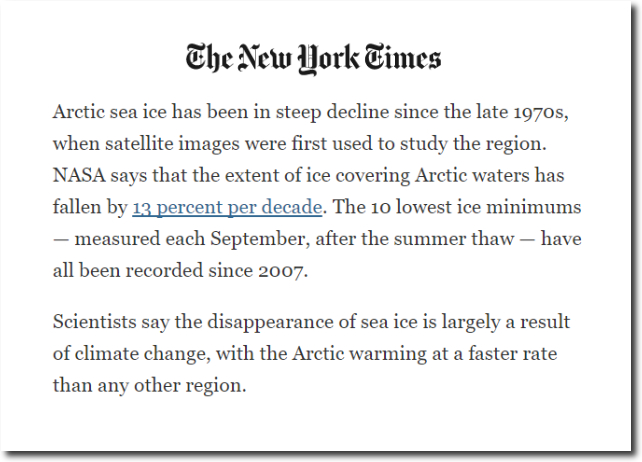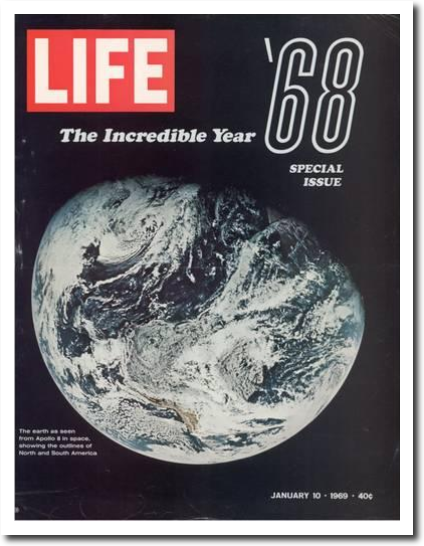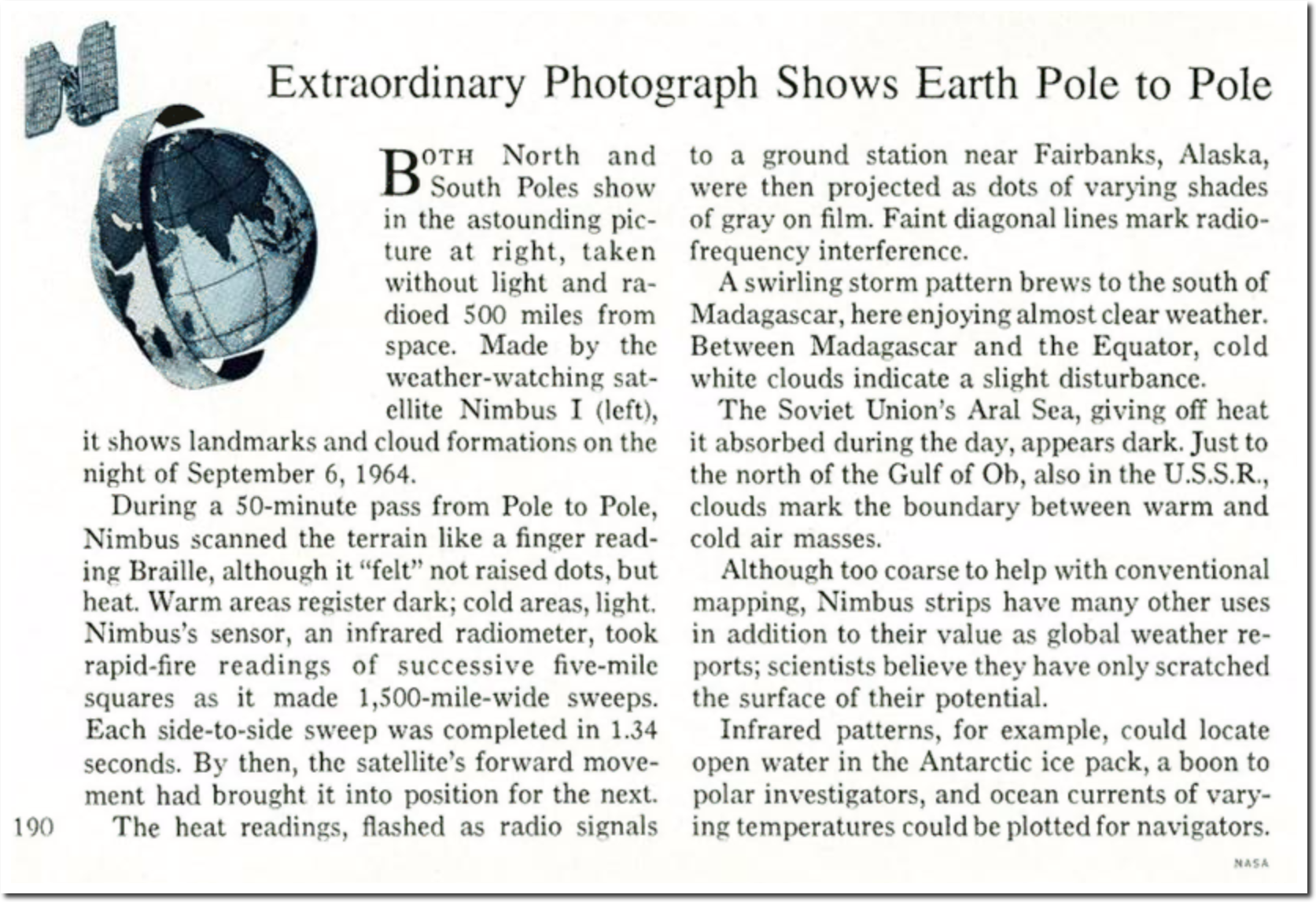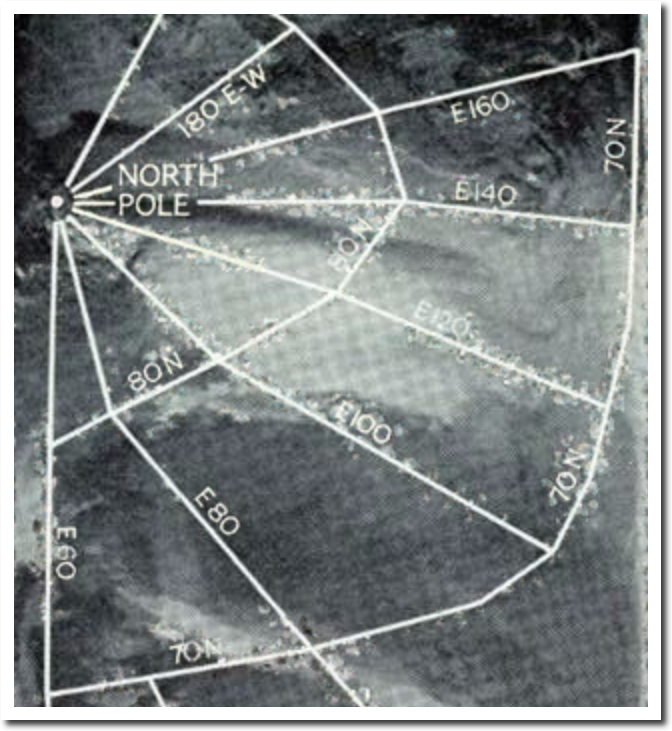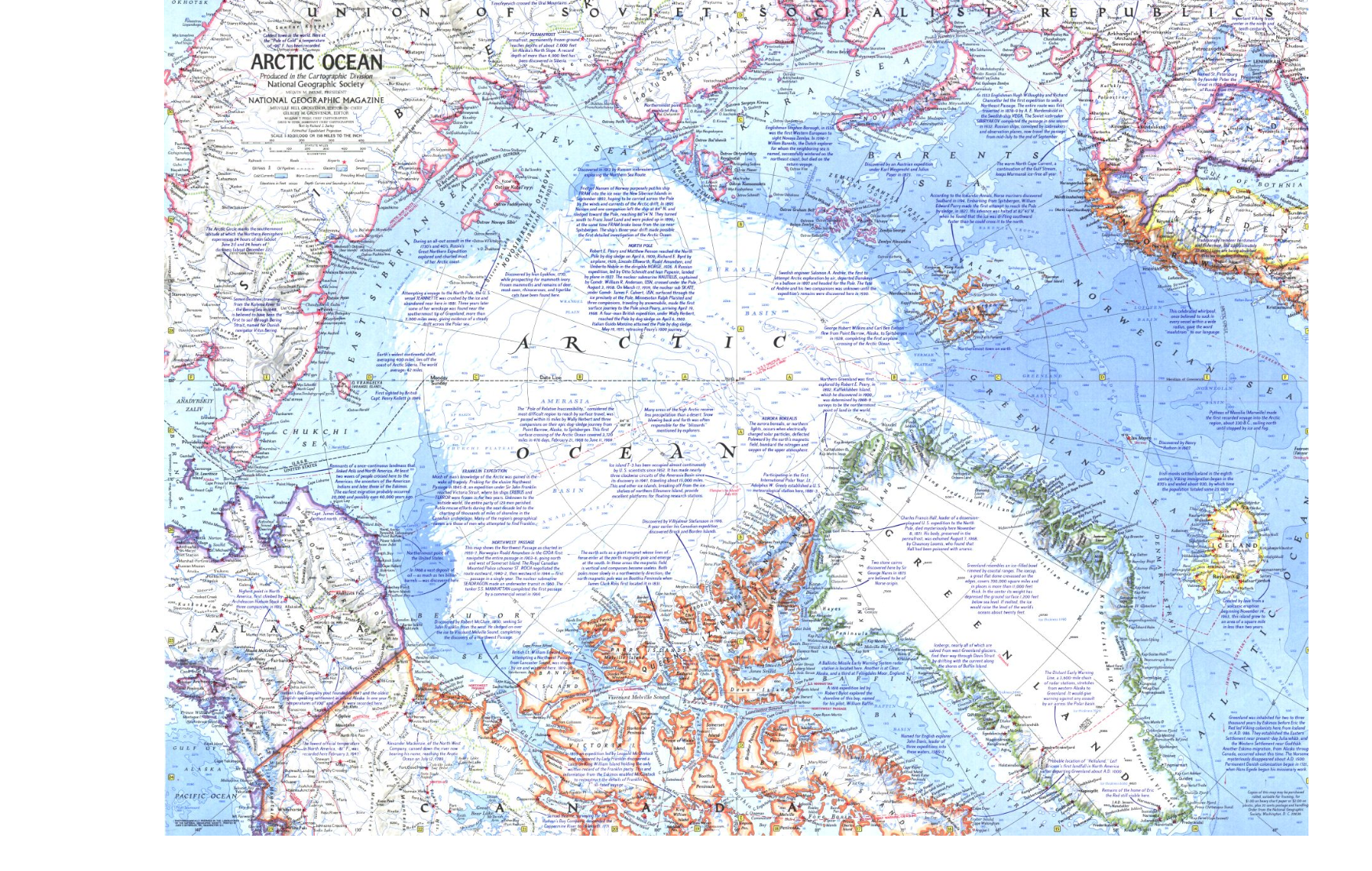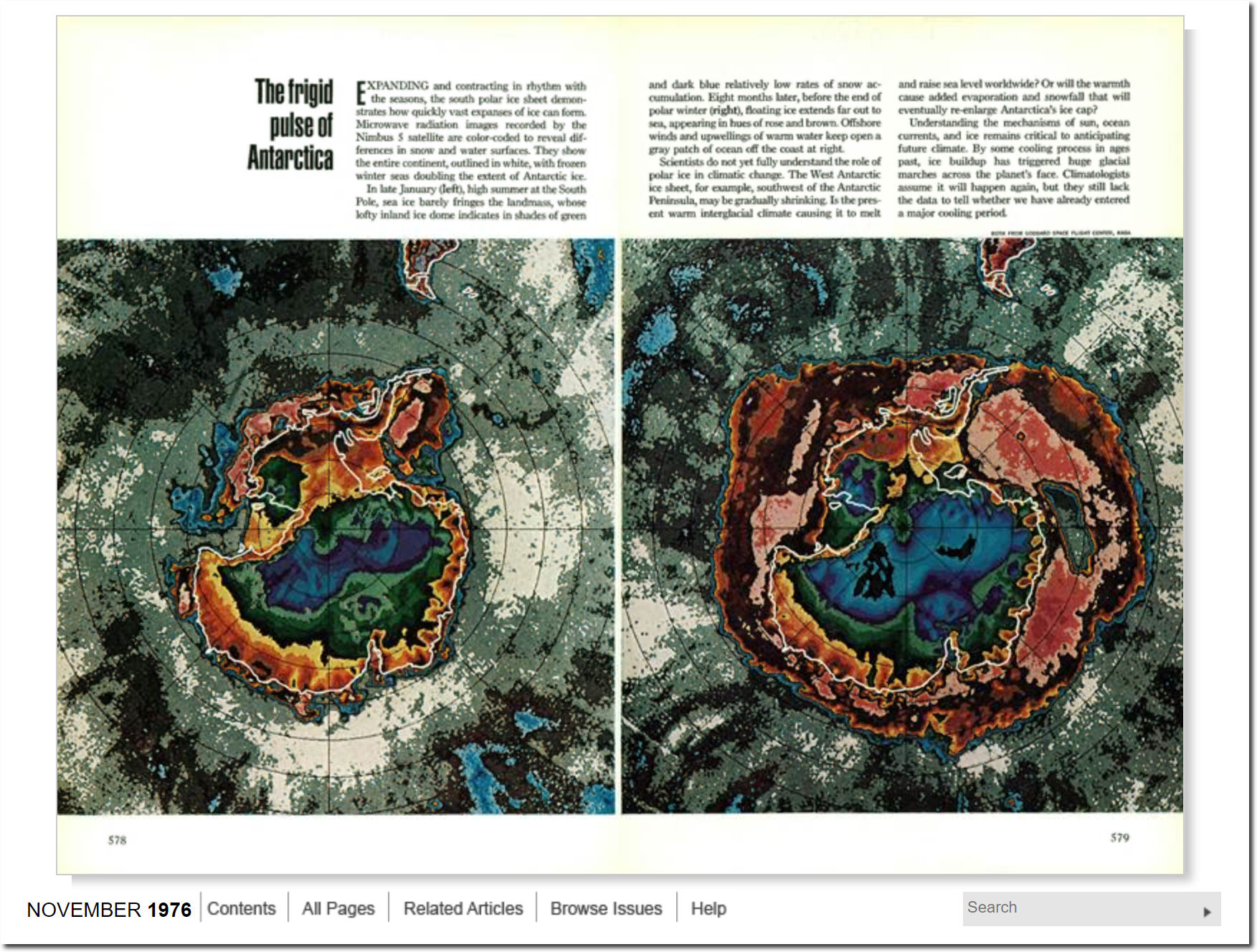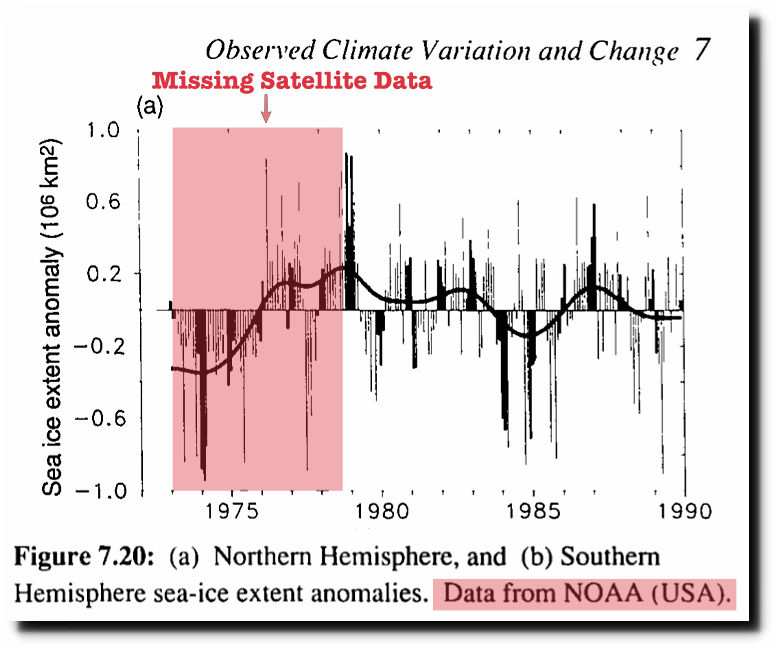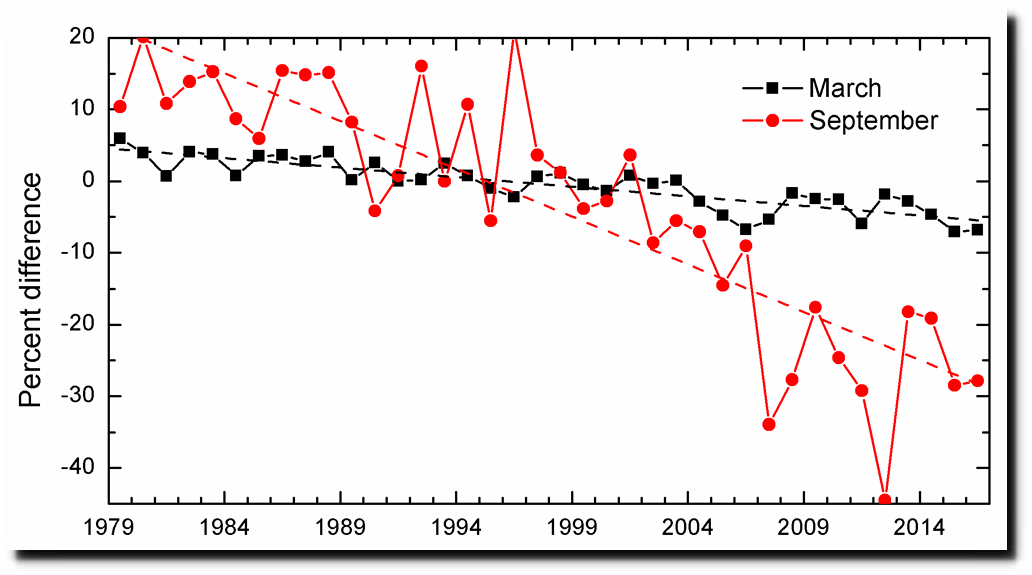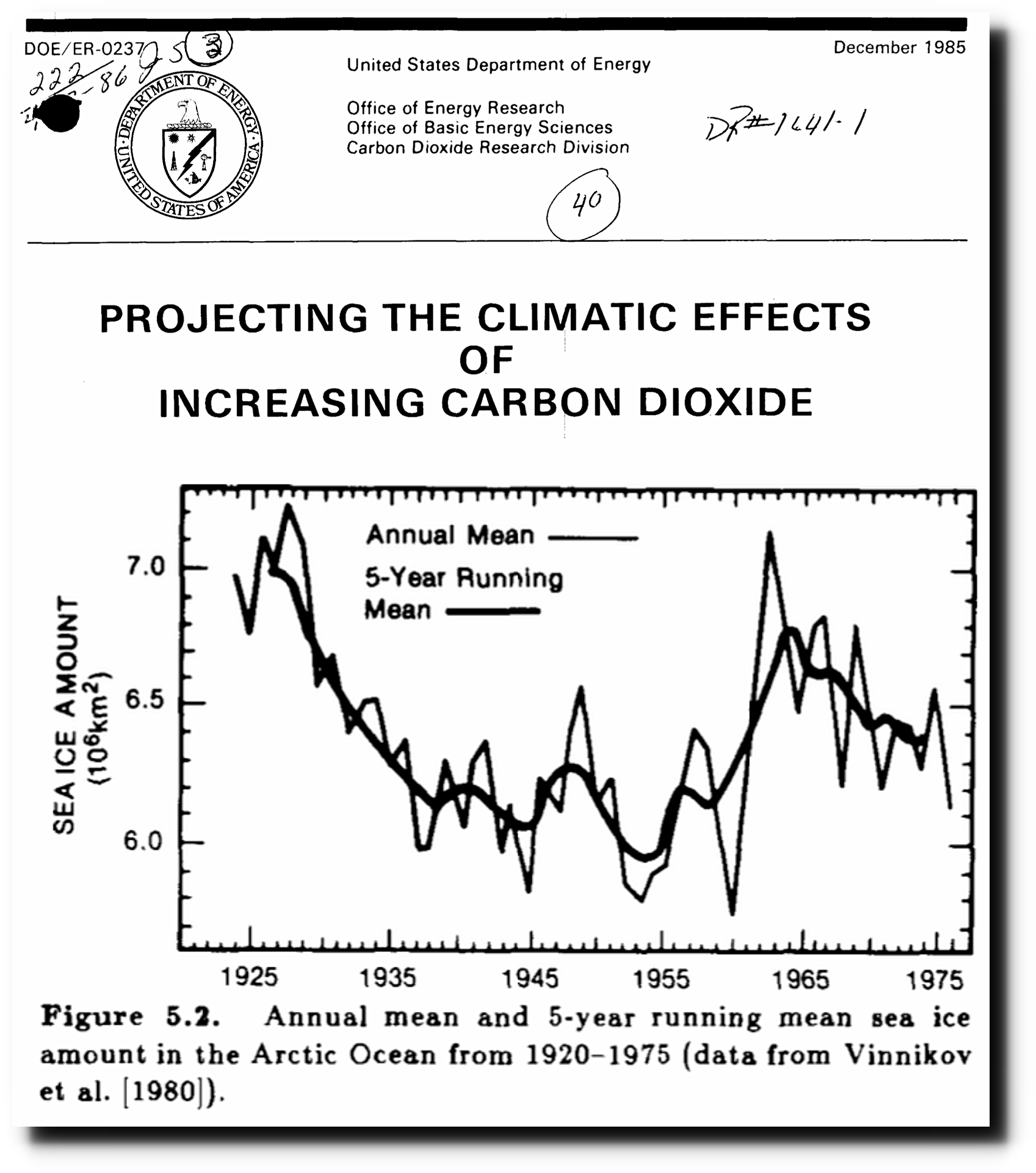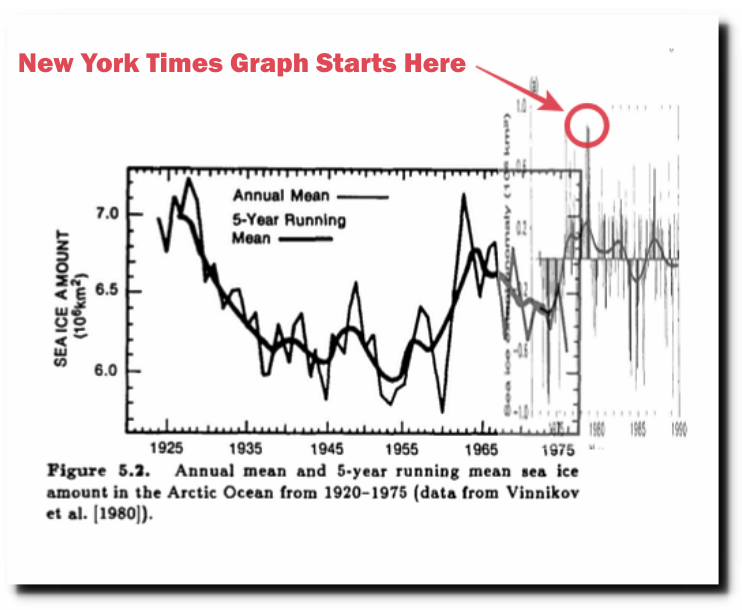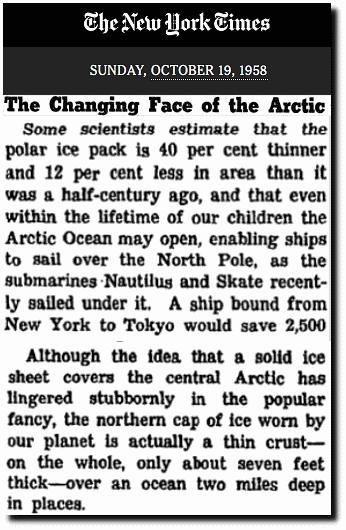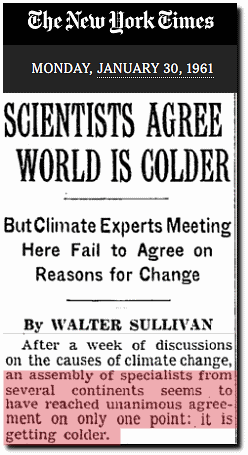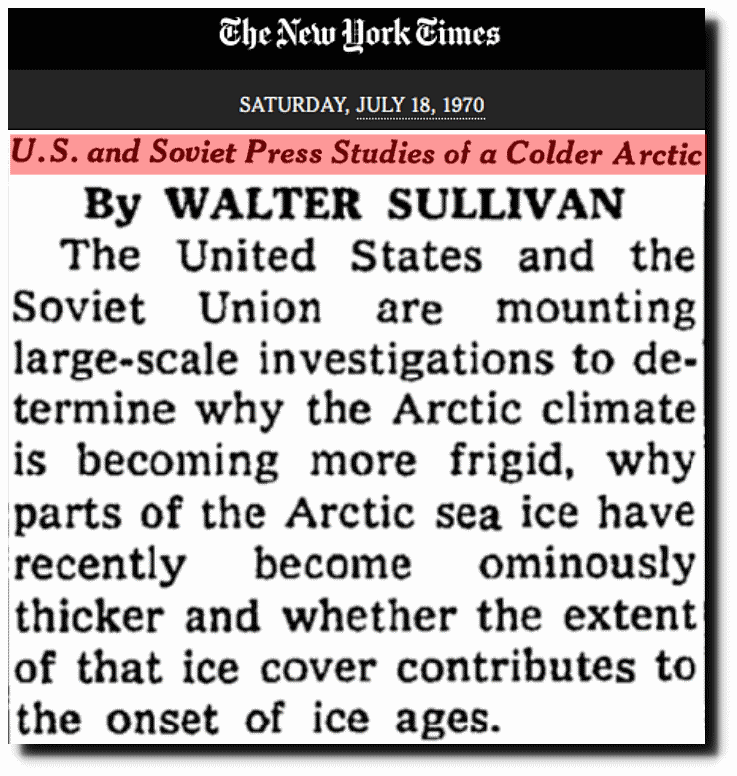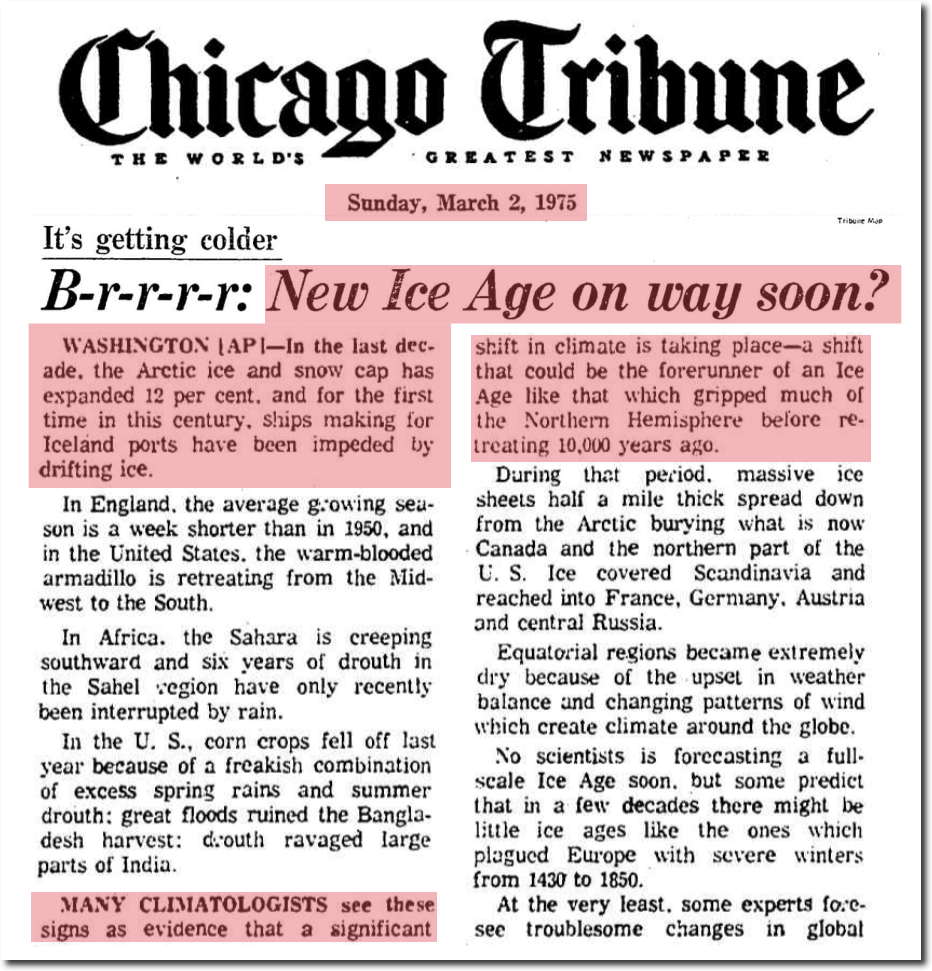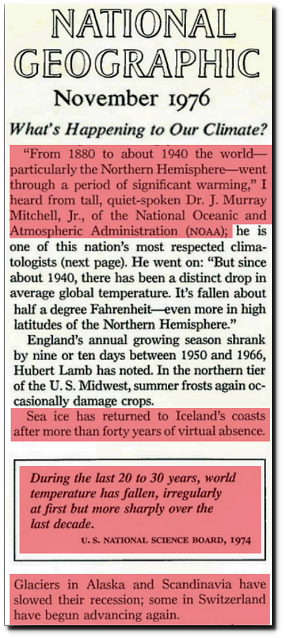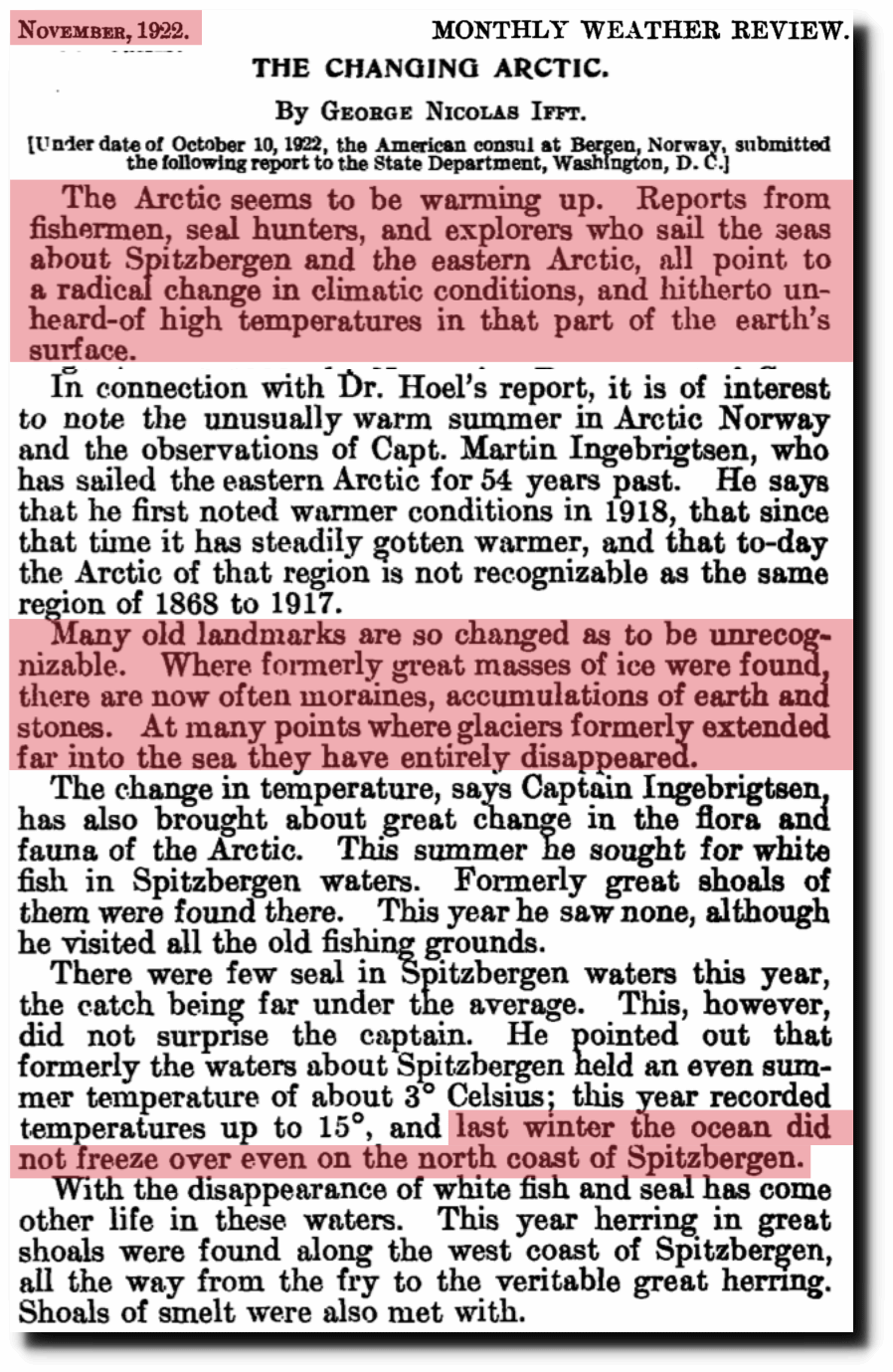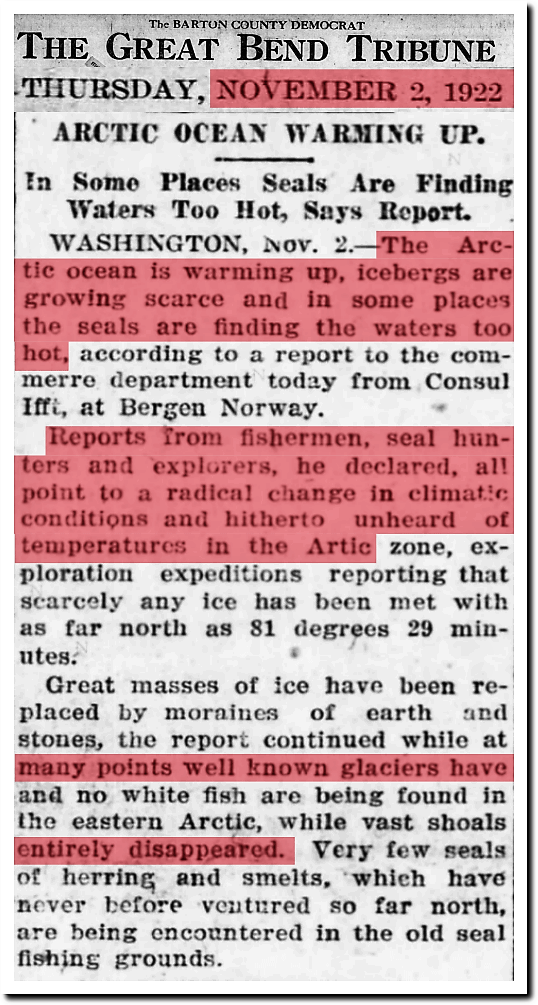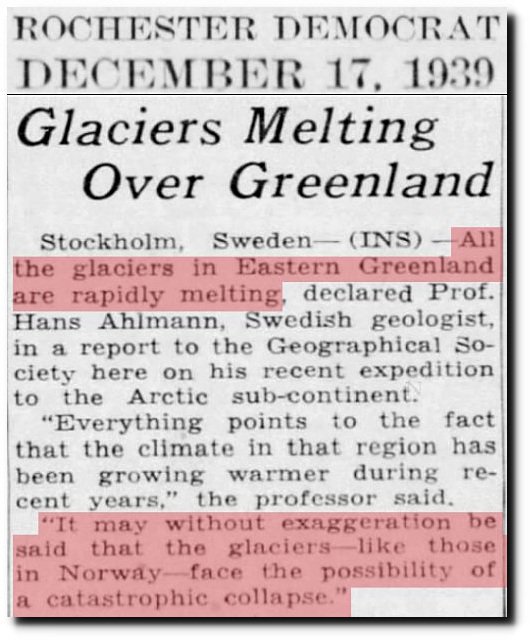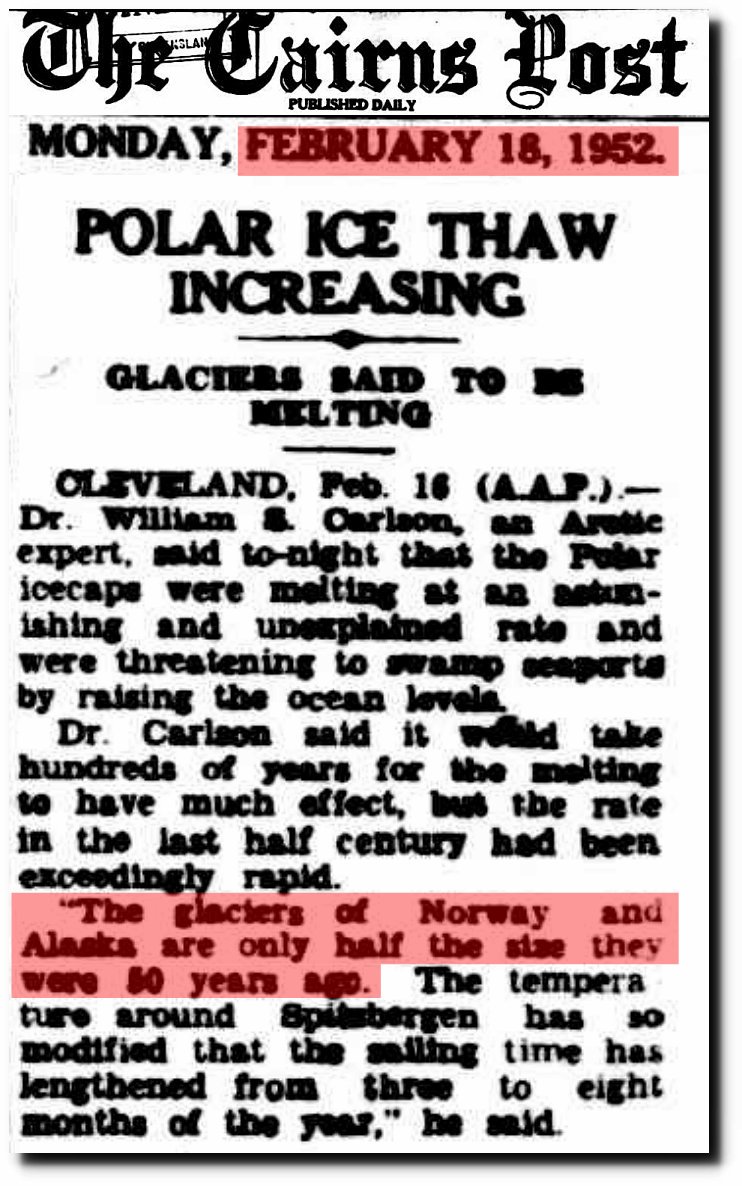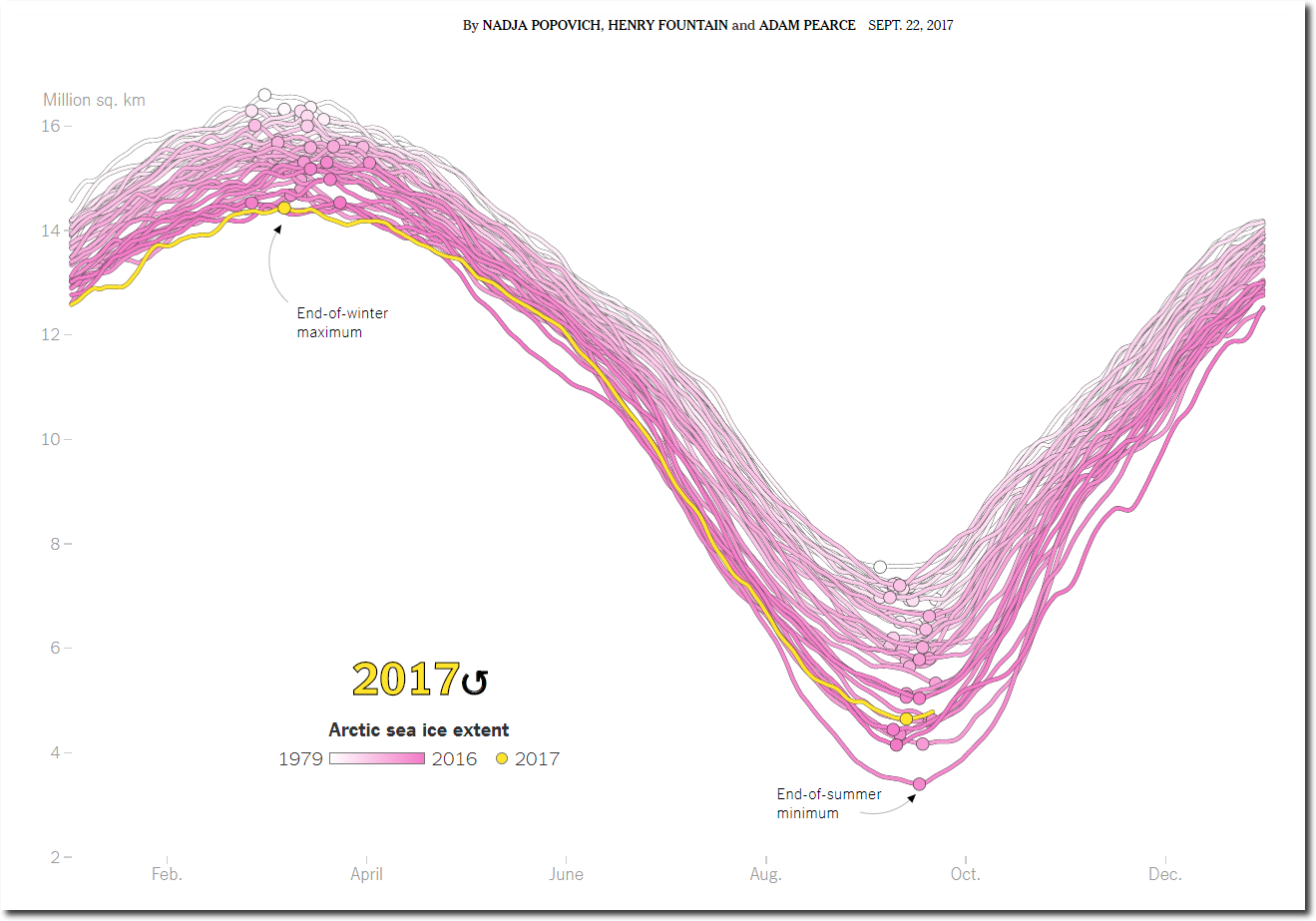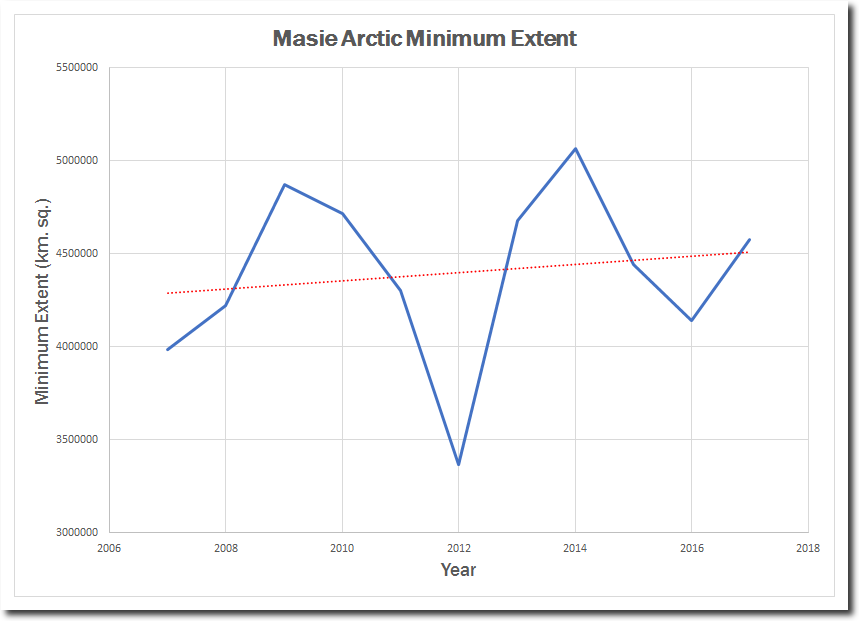The New York Times just published another fake climate article – this time about the Arctic. They start the article with the claim that satellites were first used to study the Arctic in 1979.
We Charted Arctic Sea Ice for Nearly Every Day Since 1979. You’ll See a Trend. – The New York Times
Given that we traveled to the moon in 1969, it is absurd to suggest that satellites weren’t used to study the Arctic before 1979. Here is a 1964 satellite image of the Arctic which was published in National Geographic in 1965.
The National Geographic Archive | February 1965 | page 1
Here is a detailed National Geographic Arctic sea ice map from 1971.
Here is a detailed satellite image of Antarctica from 1976, also published in National Geographic.
The National Geographic Archive | November 1976 | page 1
The 1990 IPCC report included NOAA Arctic satellite data back to 1973, when it was much lower than 1979.
In a spectacular display of scientific malpractice, NOAA now hides all of the pre-1979 peak Arctic sea ice data. By starting right at the peak, they produce a fake linear downwards trend.
ftp://ftp.oar.noaa.gov/arctic/documents/ArcticReportCard_full_report2016.pdf
This 1985 DOE climate change report had Arctic data back to 1925, which showed little ice from the 1930s to the 1950s.
Projecting the climatic effects of increasing carbon dioxide (Technical Report) | SciTech Connect
So why did the New York Times cherry pick 1979 as their start date? Because it came at the end of three of the coldest US winters on record , and Arctic sea ice was at a century peak. The graph below combines the 1985 DOE graph with the 1990 IPCC graph.
If the New York Times authors had bothered to research their own paper, they could have found this out for themselves. It was very warm in the Arctic in 1958
The Changing Face of the Arctic; The Changing Face of the Arctic – The New York Times
Three years later, the New York Times reported a unanimous consensus that earth was cooling.
By 1970, the Arctic climate was becoming more frigid, the ice was getting “ominously thicker” – and scientists were worried about a new ice age.
U.S. and Soviet Press Studies of a Colder Arctic – The New York Times
The polar ice cap had expanded 12% by 1975, after shrinking 12% before 1958. Icelandic ports were blocked with ice for the first time in the 20th century.
March 2, 1975 – B-r-r-r-r: New Ice Age on way soon? | Chicago Tribune Archive
National Geographic : 1976 Nov, Page 575
By hiding all the data before the 1979 peak, the New York Times is defrauding its readers. Arctic climate is cyclical – not linear.
Ninety-five years ago, the Arctic was having a meltdown.
https://docs.lib.noaa.gov/rescue/mwr/050/mwr-050-11-0589a.pdf
2 Nov 1922, Page 1 – Great Bend Tribune at Newspapers.com
Eighty years ago, the Arctic was having a meltdown.
17 Dec 1939, Page 15 – Harrisburg Sunday Courier
Sixty five years ago, the Arctic was having a meltdown.
18 Feb 1952 – POLAR ICE THAW INCREASING
Then the New York Times went on to obscure their graph (below) to hide the fact that there has been a large increase in minimum extent since 2012. Note the “End of summer minimum” label is at the 2012 minimum – not the 2017 minimum.
The Arctic minimum extent has been increasing for a decade. The New York Times doesn’t want their readers to know this.
masie_4km_allyears_extent_sqkm.csv
The New York Times is defrauding their readers at many levels. It is the fake news we have learned to expect from them.

